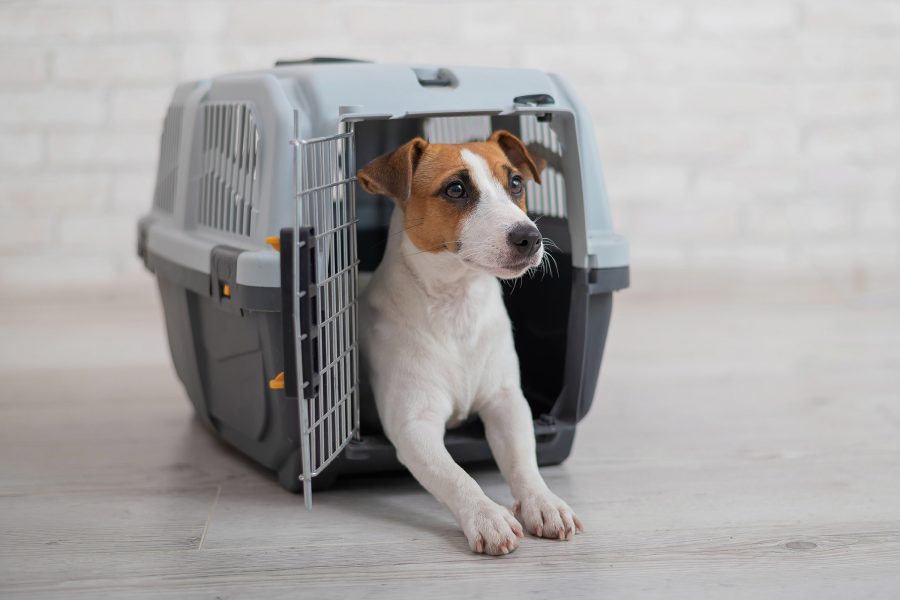Jet-setting pets: Cathay Pacific’s pet policy

About 5 billion humans took a flight in 2024. Additionally, last year, an estimated 4 million pets travelled either with their owners in the cabin or in baggage and cargo holds.
As a growing number of leisure passengers are finding it a wrench to leave their pets behind, the number of airborne animals is rising – and Asia Pacific is forecast to be the biggest growth market for puss and pooch travel.
While Cathay Pacific aims to make the process as simple as possible, pet travel is subject to regulations and requirements that can vary depending on origin and destination. It’s something usually best carried out in conjunction with an agent, ideally one registered with the International Pet and Animal Transportation Association (IPATA) or the Animal Transport Association (ATA), to help ensure your pet enjoys a smooth and comfortable travel experience.
When we humans fly, any potential obstacles are usually limited to visa requirements. With animals, it’s a lot more complex. The documentation required can include import and export licences as well as transit permissions; some countries also require animals to be microchipped. Valid health certificates from registered vets and vaccination records are needed by most countries and, for some, quarantine periods may even exceed the planned time away.
Cathay Pacific allows service animals in the cabin but pets travel in the hold. Their shipment is handled by the Cathay Cargo team, using its Cathay Live Animal solution. The solution’s welfare standards are exceedingly high and it’s trusted by clients ranging from top racehorse breeders to zoos – the arrival of Hong Kong’s new pandas last year being a striking example. In other words, Fido and Tiddles are in safe, experienced hands.
Janice Kwan, Cargo Customer Solutions Manager, looks after Cathay Live Animal solution. She explains that careful, step-by-step planning is essential. That includes making the booking for the animal first, rather than the people, if the owner intends to travel on the same flight as their pet. “Cargo space can sometimes be harder to confirm than a passenger seat. Once that’s in place, passengers can just match their ticket to be on the same flight,” she says.
The Cathay Cargo team or agent will go through a checklist to ensure the pet owner has everything in place – again something that’s best done in advance. This will include accommodation for the journey. There are strict requirements for the pet’s flight case, and Janice suggests buying one ahead of the flight to get them used to it, and filling it with treats and rewards to build positive associations.
Check-in will be at the airport’s cargo terminal, usually four to six hours before departure; in Hong Kong, there’s a quiet animal reception centre and pets are gently towed to the aircraft in a ventilated dolly, with last-on, first-off loading to minimise stress. Then, the journey for all parties can begin.
More inspiration
- China – the Chinese Mainland, Hong Kong SAR, Macao SAR and Taiwan Region
- Hong Kong SAR - English
- Chinese Mainland (China) - English
- Taiwan, China - English
- 香港特別行政區 - 繁體中文
- 中国內地 - 简体中文
- 中國台灣 - 繁體中文
- Africa
- South Africa - English
- Asia
- Bangladesh - English
- Korea - English
- Singapore - English
- Cambodia - English
- 한국 - 한국어
- Sri Lanka - English
- India - English
- Malaysia - English
- Thailand - English
- Indonesia - English
- Maldives - English
- ประเทศไทย - ภาษาไทย
- Indonesia - Bahasa Indonesia
- Myanmar - English
- Vietnam - English
- Japan - English
- Nepal - English
- Việt Nam - tiếng Việt
- 日本 - 日本語
- Philippines - English
- Australasia
- Australia - English
- New Zealand - English







